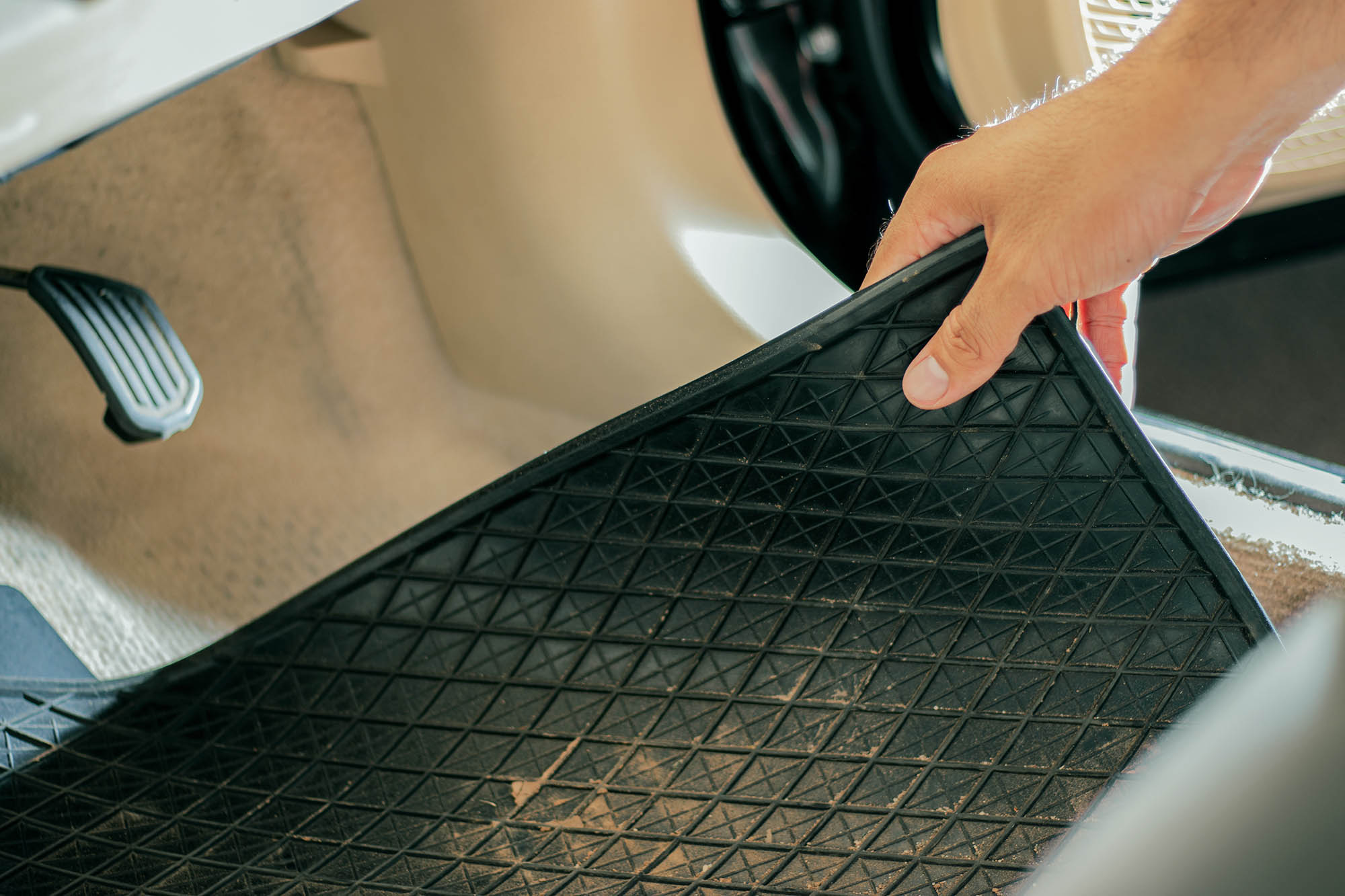Why Is the Carpet Wet in My Car?
Parts in disrepair might explain the mystery of water in your vehicle.
 Shutterstock
Shutterstock
QuickTakes:
Wet carpeting is a frustrating mystery for many car owners. There are a few conditions that can explain why your vehicle has water on the floor, ranging from worn-out seals to clogged drains to broken-down heating and cooling components. Here's a look at the most common causes of wet carpet in your vehicle.
Clogged Drains Lead to Wet Carpets
Your vehicle deploys two primary defenses to keep water out of the passenger compartment. The first is a series of drains that keeps moisture from pooling and subsequently leaking into the cabin. Over time, these drains can become clogged by leaves, dirt, road grime, and pollen, causing water to back up.
Certain vehicle drains are more likely to cause wet carpet than others. Sunroof and front cowl drains typically extend down through the A-pillar or the front fender. This routing means if they get clogged, you'll deal with moisture coming in through the kick panels or air vents ahead of the doors.
Heating and cooling components, such as the air-conditioning evaporator, can also have clogged drains. Overflowing water soaks into the carpet, letting you know it's time to clean out the affected drains to get water flowing out of the cabin again.
A wet carpet could be the result of a bad heater core. In this case, the moisture isn't water under your feet but coolant leaking out of the core on the passenger's side of the vehicle.
Leaky Seals Let in Water
The second feature automobiles use to block out moisture is the seals between the glass, body panels, and the borders of any opening in the vehicle.
Most of the time, you can trace the leakage to one of four main seals. Windshield seals can shrink over time or become compromised by metal corrosion at their borders. This deterioration allows water to enter and drip onto the floor. Door seals are subject to shrinkage with age, but they are also at risk of tearing or deforming due to constant opening and closing, which leads to further leaks.
Sunroof seals, exposed to frequent UV radiation, are another culprit for water leaks as the rubber degrades. They can also become derailed by debris on their tracks, rendering them unable to seal securely. Finally, trunk and hatch seals can wear or be damaged during regular use, allowing water to soak into the carpet in the cargo area.
Torn Tops Are a Common Culprit
Fabric convertible tops have a limited life expectancy. A soft top's seals may tear or shrink (either in the cold or from age and use) and allow water to enter the cabin, or the top's drains may clog, allowing water to pool and spill onto the carpet. Perforation from an impact, constant exposure to the sun, and breakdown from the fabric's age can make a convertible top more permeable to the elements.



